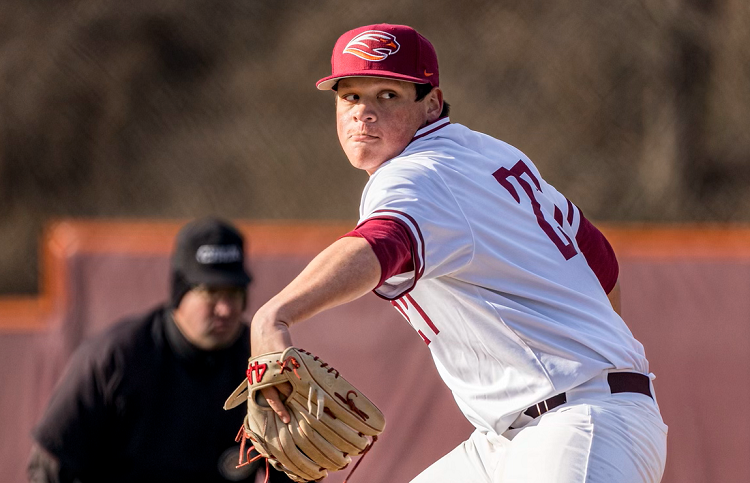
Jack Greco, Junior at Susquehanna University, joined us this past summer as a part of our Summer Throwing Program. His goals for the summer were to improve his strength and power to help him gain additional velocity on the mound. Jack’s summer began with a complete assessment, including a movement screen, strength and power testing, and a mechanical breakdown of his delivery combining both motion capture and video analysis. When he joined us Jack’s velo was sitting 84-86 mph. He finished the summer sitting 87-89, T 90. There is no other way to say this… Jack put in the time and got after it!
How did he do it?
Every pitcher wants to throw harder and getting them to do so during our 3-month summer program is based on targeting each athlete’s lowest hanging fruit. In Jack’s case, several topics stood out in a few of the various categories we look at in our baseline assessment. So, let’s review each with some specificity.
Mobility
The movement screening portion of the assessment is crucial in helping identify “less than optimal” movement strategies that may be holding an athlete back from getting into more efficient on the mound. Often, these issues tie directly into the mechanical deficiencies that we’re likely to see in their video analysis. In Jack’s case three topics stood out.
-
- Lower Half Mobility – While this may work for a few pitchers we deem as “outliers”, a lack of hip internal rotation will generally prohibit the pitcher from engaging his back side properly. In addition, we often see a pitcher presenting with limited Hip IR, similar to Jack, closing off his landing and forcing throws across his body. This makes it difficult for the athlete to rotate on time due to their limited range of motion. Tight hips in general can lead to struggles with engaging the pelvis / glute and how much force can be put into the ground. Below are the results for Jack’s lower half mobility assessment.
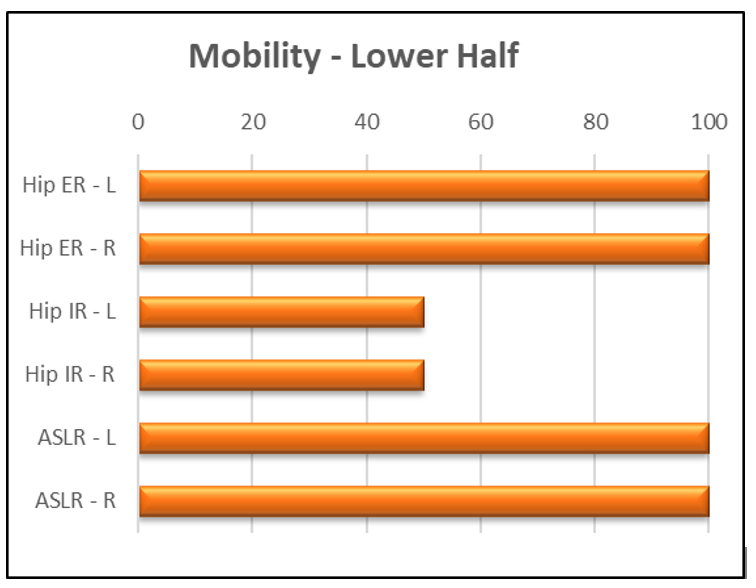
-
- Insufficient Ankle Mobility – This will generally lead to an unstable base as the transition throughout each phase of the throw. Not being grounded at foot plant can create a variety of issues all the way up the chain, including compromised balance points and ultimately spinning off at release.
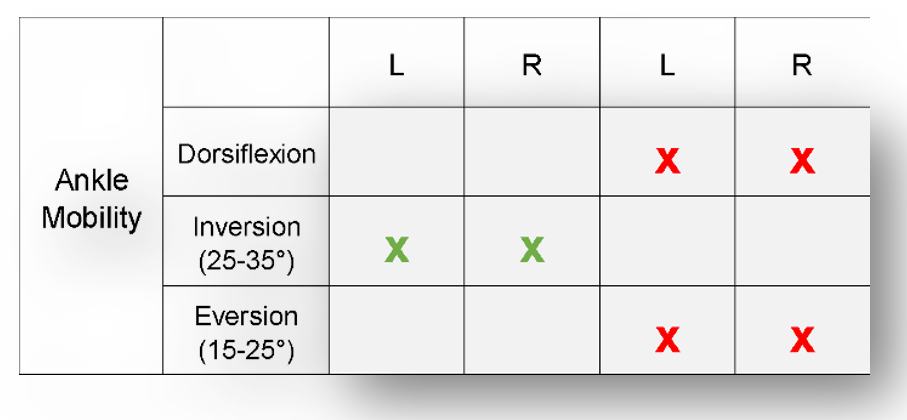
-
- Tight Pec Minor + Lats – When a pitcher has arm issues, this is one of the rabbit holes we dive down. Tight internal rotators like the pecs and lats can limit a pitcher’s ability to get into their scap more efficiently during the stride phase. This could also create tension earlier in the throw, affecting momentum by restricting how effectively their arm is able to unravel through release.
Strength and Power
Paired with the movement screening, strength and power testing helps us learn about the type of athlete we have in front of us. Jack arrived with a generally solid base of strength this summer, so what we needed to focus on was power generation, which by the way is not unusual at all. Most college programs focus primarily on strength, leaving the velocity side of the power curve for later in the off-season. This is fine if an athlete needs more absolute strength but in Jack’s case, we felt spending more time in the force side may start to give us what we refer to as diminishing returns.
The following two areas stood out in Jacks’ strength and power testing evals.
-
- Upper Half Power – This is a difficult topic to evaluate for most colleges and facilities. You need a Proteus Motion which actually measures power production in three dimensions in the upper body. Jack’s assessment with Proteus highlighted that his upper half power production needed improvement. Working on Proteus during the 3 months, Jack progressed from initially working on the force side of power, to working on elasticity and finally on unilateral stability.
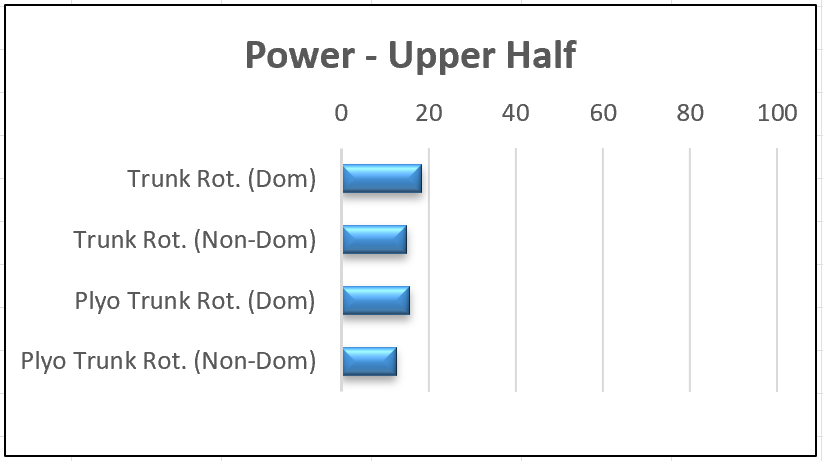
-
- Decel – Having the ability to decelerate is one of the most important attributes that a pitcher needs to create a good lead leg block. Jack’s assessment highlighted this as an area of improvement. Based on his “Front Leg RSI” results in the assessment, Jack’s plyometric ability was a Phase 2. This means that he was able to stabilize quickly, but lacked the necessary speed from plyometric standpoint.
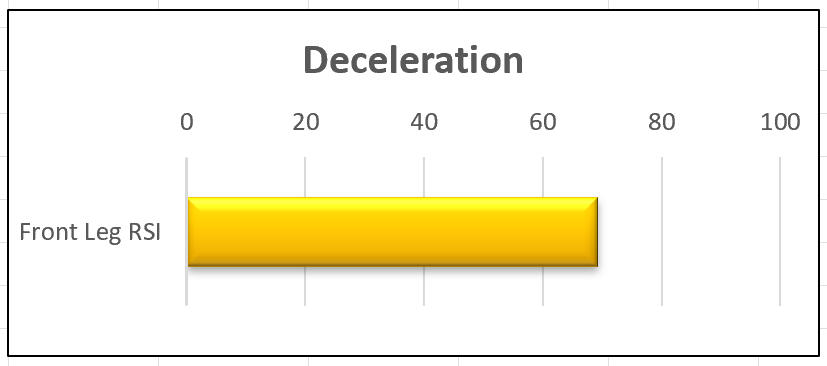
Mechanical Delivery
The final part of Jack’s assessment was his mechanical breakdown with motion capture and video analysis. Along with the video, having the motion capture data is great with being able to pick up things that are difficult to see with the naked eye such as angular velocities and thus supplying us with greater insight as to what is really happening throughout his delivery.
Let’s review what he did well and what we needed to work on.
Things he did well
-
- Pelvic / glute engagement – Jack does a pretty good job with hinging which helps him to hold tension longer as he transitions from leg lift into foot plant.
- Forward trunk tilt at release – This allows him to stay on the ball longer in order to create better leverage through better extension.
Things that needed work
-
- Poor ankle mobility and hip internal rotation – These two issues were causing Jack to land across his body with an open foot, contributing to him to spinning off at release.
- Trunk counter rotated at foot plant – An overly rotated upper half can cause early hip shoulder separation (prior to foot plant) resulting in big energy leaks as he would transition into his throw.
- Late arm at foot plant – In addition, due to his tight pecs and lats, Jack had a bit of a late arm resulting in poor timing off his scap load.
- Interest of note is that Jack’s motion capture also highlighted similar areas that we had already discovered in the initial assessment that we need to address. These included his scap load which was practically non-existent as well as Max Front Knee Ext. Angular Velocity which was lower than we look for.
We suspect that these were related to his poor ankle mobility and his single leg stability. These came into play when he was landing across his body with an unstable open foot (spinning off). So, adjusting his front foot position @ FP and landing more in line allowed him to play into his anatomy and work with his hips (ER) vs. against them (IR).
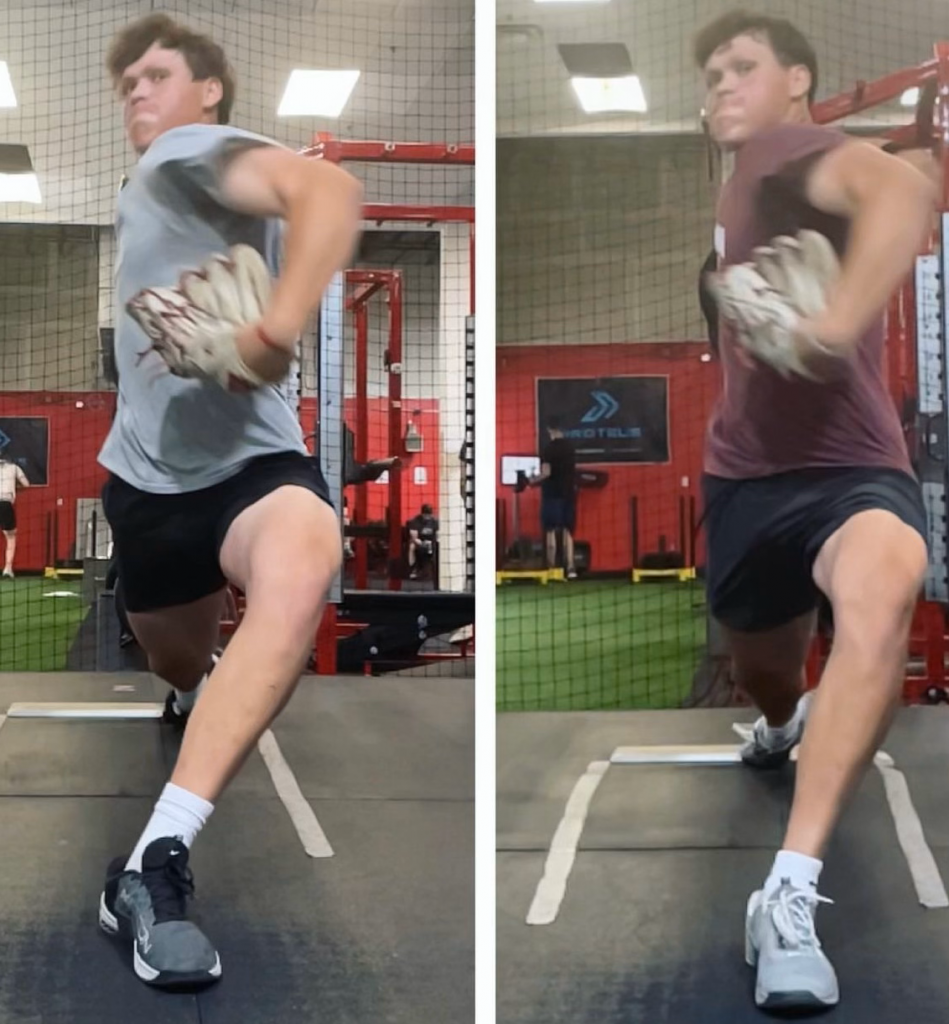
How we addressed his movement deficiencies
Following the completion of the mechanical assessment, we generally prescribe throwing correctives in addition to his strength and mobility work in–gym to help improve overall movement patterns on the mound. Below is a summary of Jack’s movement drills to help address his deficiencies:
Walking Torque Drill – Used to help with linear component to all upper body mechanics and front foot position @ FP.
Figure 8 Rocker – Used to help feel a loose arm and shoulder to eliminate muscling up while also putting the trunk in a stable position @ FP.
Step Back Drill – Used to improve shifting COM (Drifting)
Step Behind Drill – Used to help with glute engagement and better sequencing the upper and lower half
Summary Results
Jack was locked in this summer. He worked as hard as anyone in the gym and the results speak for themselves. When Jack first arrived, he was sitting 84-86 mph, T 87. At departure he sat 87-89, T 90 in our Live AB’s.
By freeing up his hips and improving his tissue quality in his pec minor and lats, Jack was able to further develop his delivery on the mound this summer at a high level. In the weight room, he increased his force output throughout his power phase in July which blended nicely with our high intent throwing phase.
As he returns to campus with more velocity and a more athletic delivery, we are very excited to see what comes next for Jack. Best of Luck!
By Niko Leontarakis (Director of Pitching at RPP Baseball) and Bahram Shirazi
You live too far to train with us in-house at RPP? You can now train with us on a REMOTE basis.


